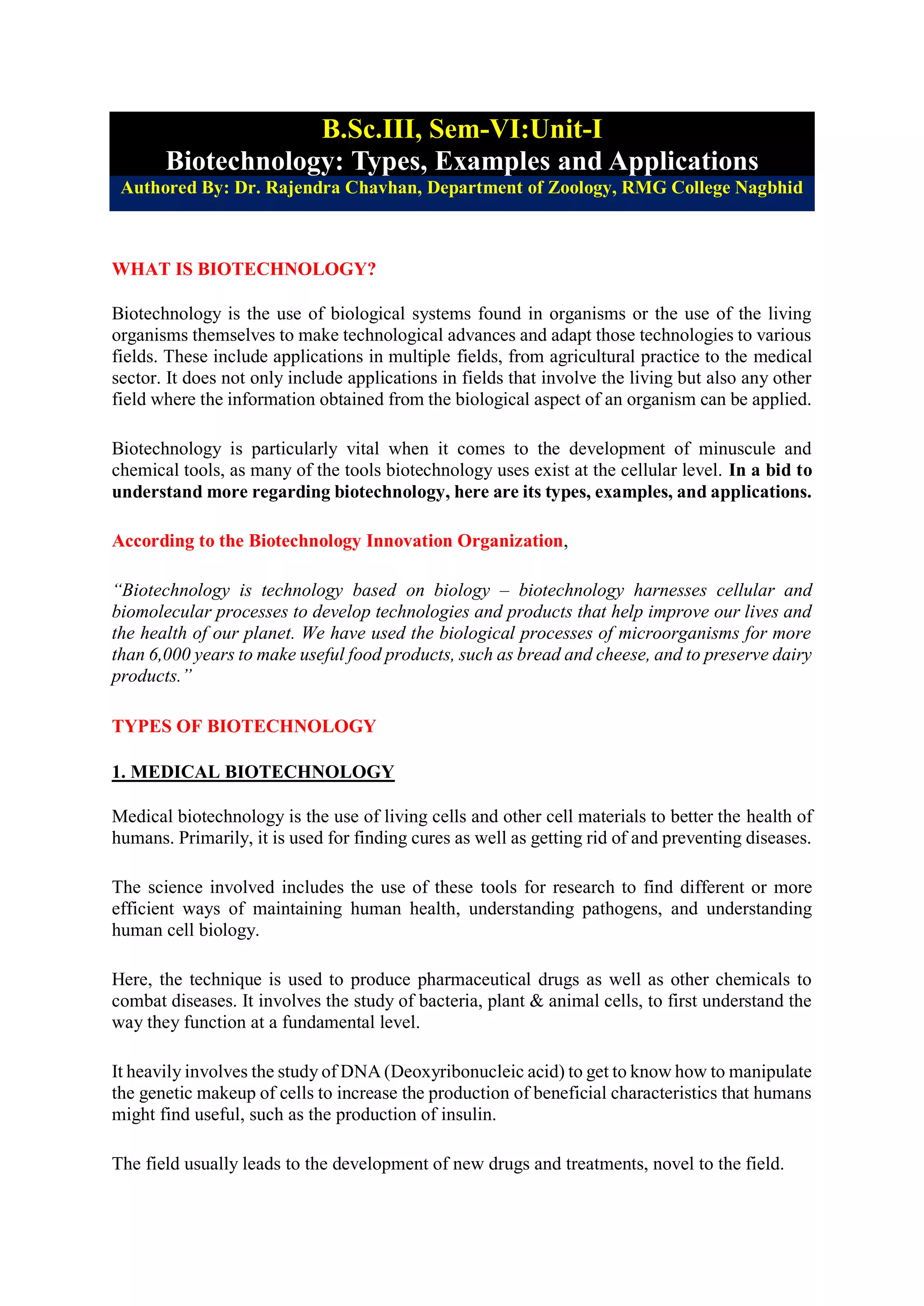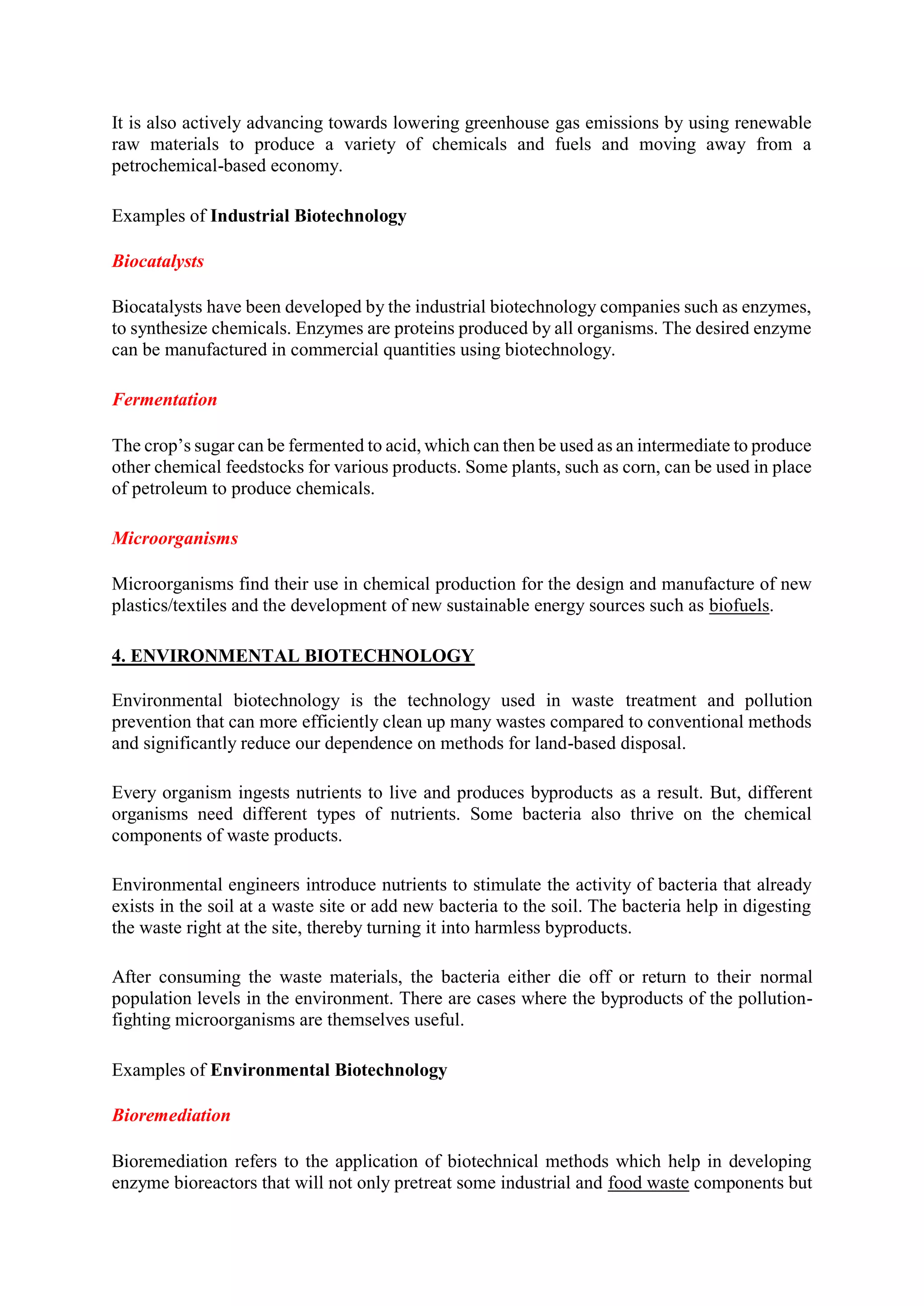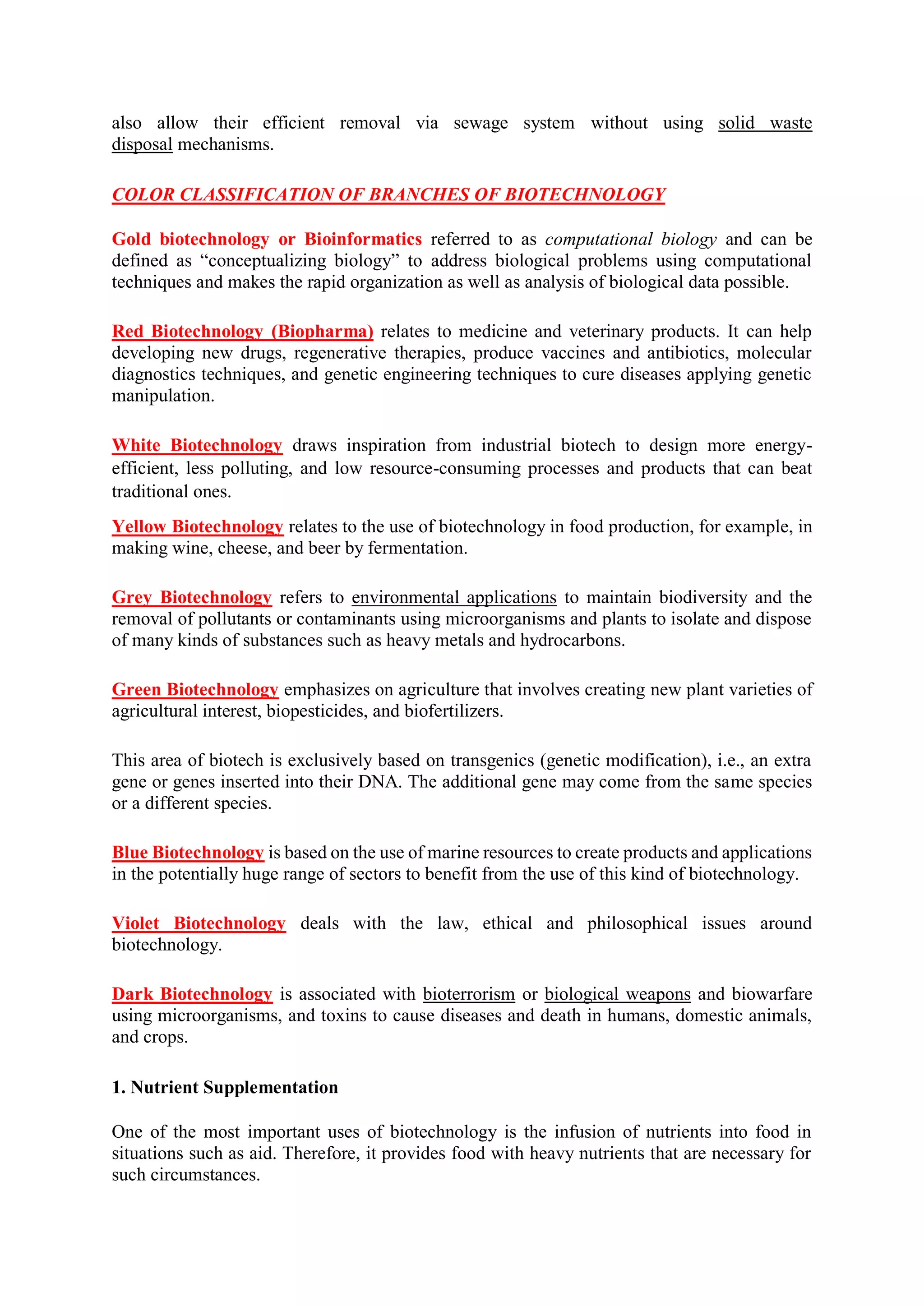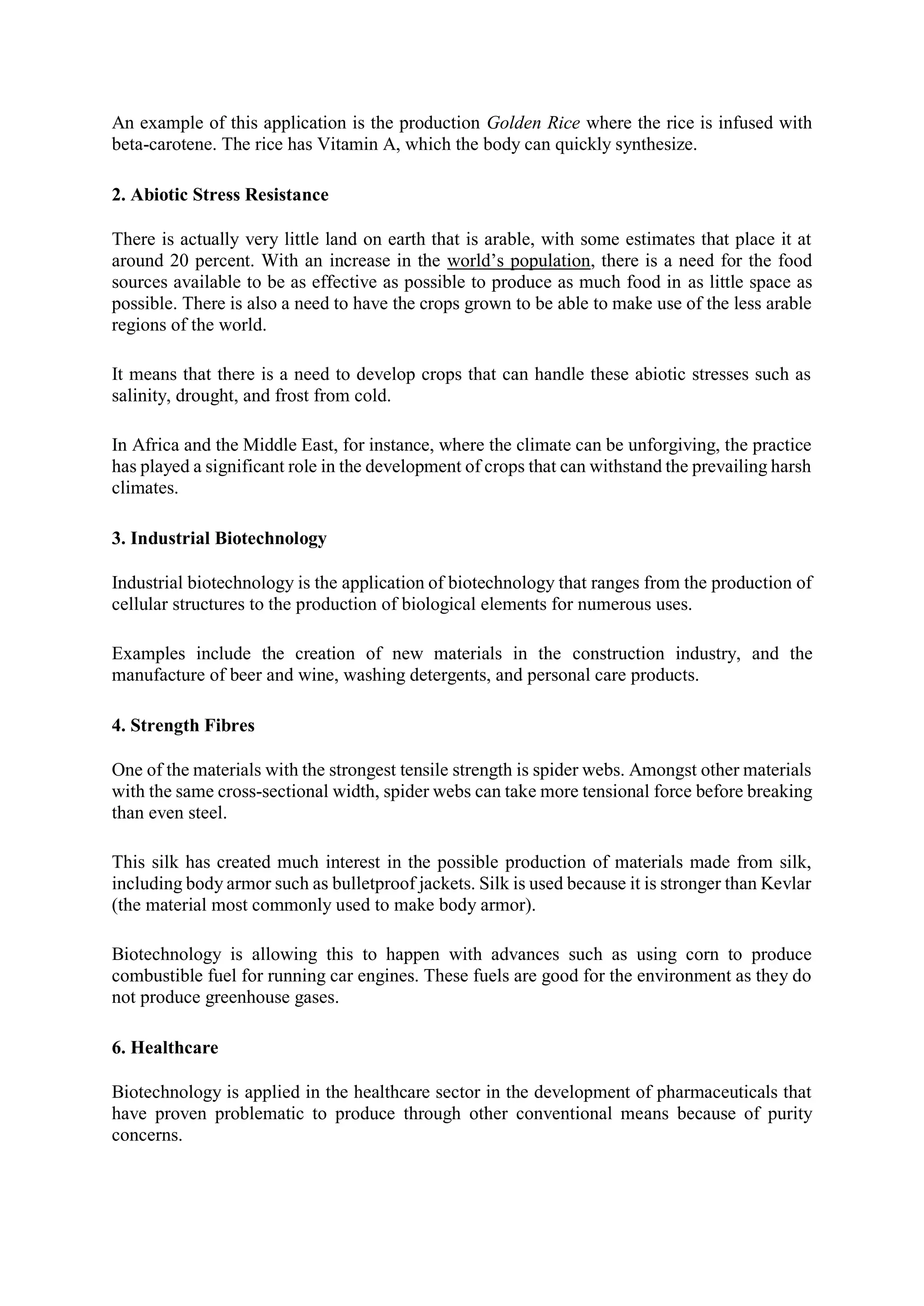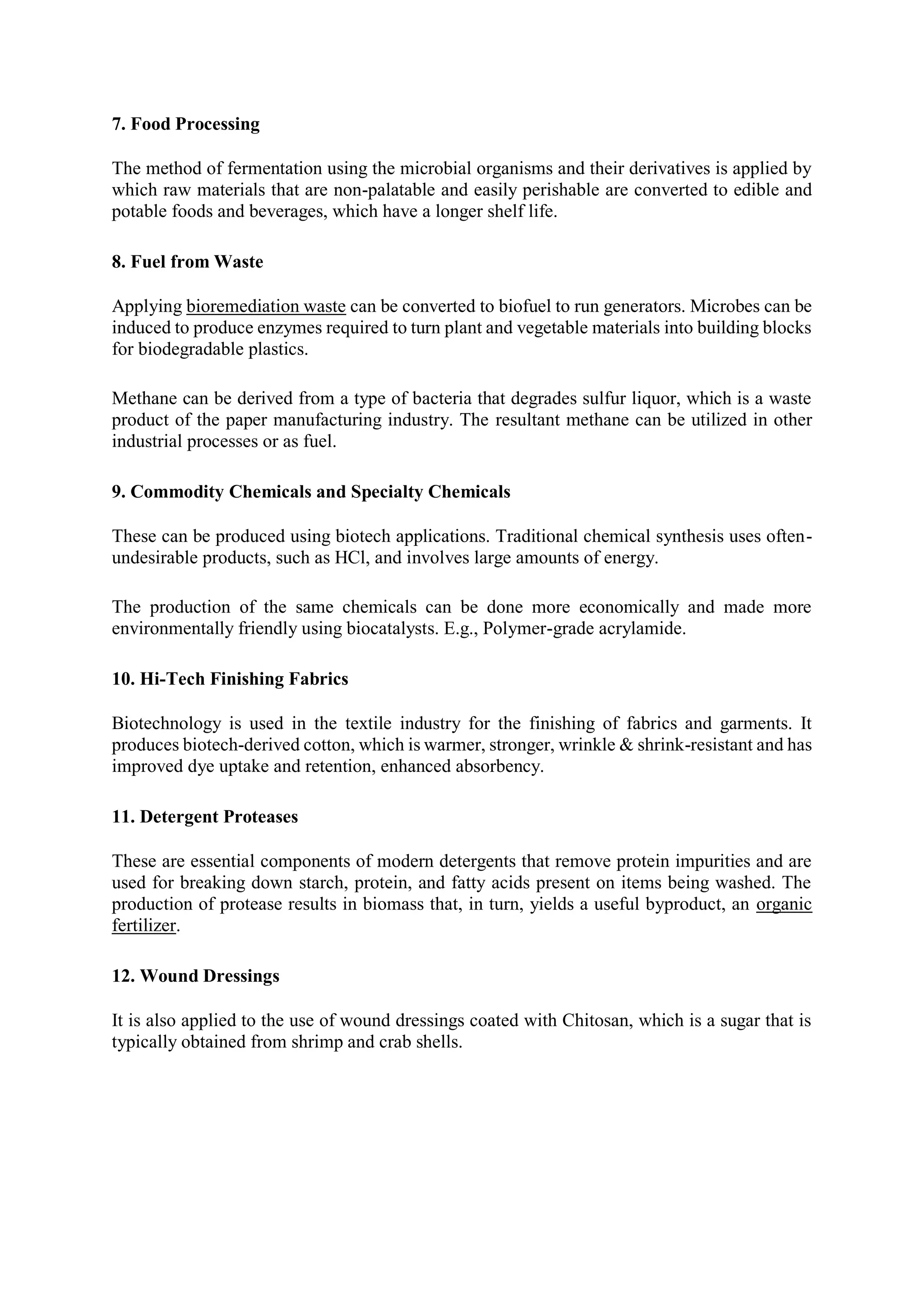The document discusses biotechnology's definitions, types, examples, and applications across various sectors, including medical, agricultural, industrial, and environmental biotechnology. It highlights the use of biological systems to enhance human health, increase crop yields, and improve industrial processes, showcasing innovations such as genetically modified organisms, vaccines, and bioremediation techniques. Additionally, it categorizes biotechnology into various branches, each with specific focuses such as pharmaceuticals, environmental management, and food processing.
